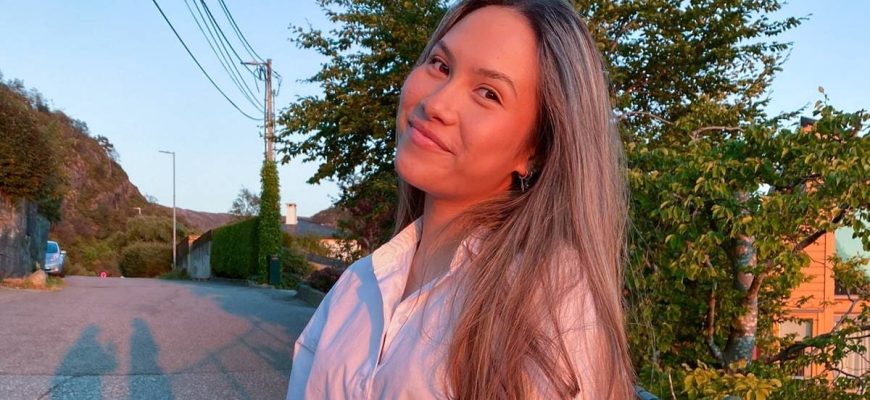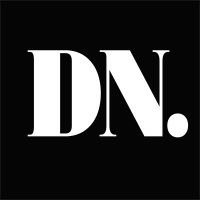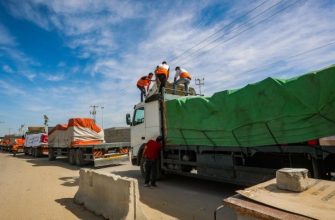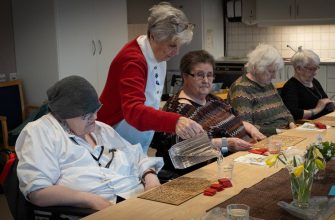On Friday, Research and Higher Education Minister Oddmund Hoel (Sp) presented this year’s number of applicants to higher education.
They showed that a total of 142,416 people have applied for higher education via Samordna admissions. This is an increase of 4.7 per cent, the government writes in a press release.
Never before have there been so many study places to apply for. A total of 64,086 study places spread over 1,364 studies were available – this is 2.4 per cent more compared to last year.
The rise is greatest in the subject areas of history, economics and social science.
This pleases the minister the most
After several years of decline, the arrows are now pointing upwards for nursing education.
On a national basis, 900 more had nursing as their first choice this year, compared to last year’s figure. There are also more men applying for nursing education.
Among other things, the number of applicants to nursing education at the University College in Vestland is increasing by 30 per cent.
The number of applicants for nursing education in Bergen is particularly high. 853 applicants have this as their first choice. Last year, the corresponding figure was 650.
One of the applicants is 18-year-old Jasmine Fyllingen from Askøy outside Bergen.
– I can’t exactly say that the salary is the reason. But I enjoy working with people, she says.
She has wanted to become a nurse since secondary school.
WANTS TO BE A NURSE: 18-year-old Jasmine Fyllingen from Askøy is looking forward to starting her studies.
Photo: Private
– I like that it’s a practical job and that you don’t just sit quietly, but have a varied everyday life and get to know different people, says Fyllingen.
– In the past there has been a decline in the number of applicants for nursing. What do you think about the status of the nursing profession in Norway now?
– There are many debates about the healthcare system and I know that people discuss the salary. It’s about heavier tasks, and it’s a bit scary, I’ll be honest. We know that we need nurses, and there are signs that we must do something to promote the profession better.
PRESENT NUMBERS: At 9.30 this year’s applicant figures for higher education will be presented.
Martine Revheim Eliassen (18) has also applied to study nursing.
– It gives me a feeling that I am helping in society. In any case, when there will soon be a wave of elderly people. People need people, says Eliassen.
She works in a nursing home and takes the health course with study preparation at Nordahl Grieg upper secondary school in Bergen.
– I am of course thinking about the salary and how little healthcare workers and nurses are paid for the work they actually do. I see how much effort it is, but also how rewarding it can be. After all, we help people, she says.
ALSO WANT TO BECOME A NURSE: Martine Revheim Eliassen believes that nurses should be paid better.
Photo: Private
– We desperately need more nurses
Oddmund Hoel points to the importance of students like Jasmine and Martine applying to become nurses.
– We have had a worrying decline in the number of applicants for health subjects, especially for nursing education over several years. This trend has now reversed. Now young people again want to become nurses, including men. We desperately need more nurses, says Hoel.
PLEASED: Research and Higher Education Minister Oddmund Hoel (Sp) presented today’s figures at OsloMet.
Photo: Mariam Eltervåg Cissé / NRK
– The fact that over 900 more have nursing as their first choice this year says quite a lot about Norwegian youth. It shows that we have young people who are willing to stand up for others and for society.
On the other hand, the study is not growing in popularity everywhere. In both Molde and Kristiansund the arrows point downwards.
Bergen second most popular
The figures from Samordna admissions show that Bergen has become more attractive as a study city. Now only Oslo is more popular than Bergen among students.
Eleven percent more applied to Bergen this year, compared to last year. Eight percent of all applicants for higher education have the University of Bergen (UiB) as their first choice.
TAKES SECOND PLACE: Many people want to go to Bergen, and UiB.
Photo: Simon Skjelvik Brandseth / NRK
It is jurisprudence (law) at the University of Oslo and UiB that has the most first-choice applicants. Then comes the civil economics study at NHH.
STILL THE FAVORITE: Oslo is still the country’s most popular place to study.
More are applying to vocational schools
The number of applicants to vocational schools is also increasing significantly. This year there are nearly 2,300 more applicants than last year. This gives an increase of around 17 per cent.
A total of 15,742 people have applied to the vocational schools through Samordna Opttak.
At the 26 vocational schools, there are 494 different studies that you could apply for through Samordna admissions.
In vocational school admissions, there are the most first-choice applicants for the education areas “technological subjects” with over 9,000 applicants, and for “health subjects” with over 3,000 applicants.
Better gender distribution in the studies
A total of 85,536 women and 56,880 men applied for higher education this year. This amounts to a female share of 60.1 per cent, and a male share of 39.9 per cent.
– First of all, this is fairly stable from last year, so we cannot say that we are very worried. There are traditionally more women who want to take higher education, and that is unfortunately not surprising. We would very much like to have even more men in, says Hoel.
Still few who want to become a teacher
For the fifth year in a row, the number of applicants to teacher training courses has fallen, but the decline is not as dramatic as last year.
The number of first-choice applicants to teacher training courses has decreased by 4.2 per cent this year.
It is particularly critical for primary school teacher training, in grades 1-7 and 5-10. There, the number of first-choice applicants is down by 11 and 12 per cent from last year.
MORE APPLY HERE: HVL is among those offering nursing education.
Photo: Åge Algerøy
The government is well aware of the challenge. Earlier this spring, they presented a strategy for recruitment to the teacher training courses.
But the minister still fears that a number of study places may end up being empty in the autumn.
– There was a big drop in applicants for teacher training courses last year as well, so we have kept a close eye on that in the time that followed, says Hoel.
Both kindergarten teacher and lecturer training are in line with last year’s figures, while more will become vocational teachers and teachers in practical and aesthetic subjects.
Hoel points out that the increase in child protection studies is very gratifying. The education had six percent more applicants compared to last year’s figures.
Upswing for ICT and the economy
The technology subjects are becoming increasingly popular, according to the figures.
Of the courses that have the most first-time applicants per study place, we find the new study program Business, economics and data science at the Norwegian School of Economics (NHH).
NEWCOMERS ON TOP: The new study program Business, economics and data science at NHH is popular among applicants.
Photo: Silje Katrine Robinson / photographer silje katrine robinson
Aeronautics at the University of Tromsø is in second place.
This year, 1 in 5 applicants has at least one technology education in their application. It is particularly engineering education and maritime studies that stand out as favourites. There have also never been so many study places to apply for in this area.
There are also more women applying for ICT and economics – 5 per cent more than last year.
247 more study places are planned than last year, a total of 2,961 study places. This amounts to a percentage increase of 9.1.
Online and collection-based studies are becoming more popular
This year, around 22,000 applicants have set up online and collection-based studies as their first choice. This is around 20 per cent more than last year.
In comparison, there are 2.4 per cent more first-choice applicants for place-based studies this year than last year.
Most foreign applicants from Syria and Ukraine
Of the applicants with a foreign educational background, most are from Syria and Ukraine, but also Turkey and Poland.
Applicants from Ukraine continue to increase from last year’s intake, when there were 213 applicants with a Ukrainian educational background at the application deadline. This year, 349 with the same background applied for admission through Samordna.
– We see that the number of applicants with an educational background from Syria increased year by year, since the refugee flow started in 2015. The trends show the same with an increase in applicants from Ukraine. The opportunity to take a fast track to learn Norwegian can make this go faster for Ukrainians, but we need broader analyzes to determine this, says director Sveinung Skule in the Directorate for Higher Education and Skills.
Published
26.04.2024, at 09.11
Updated
26.04.2024, at 13.19








